
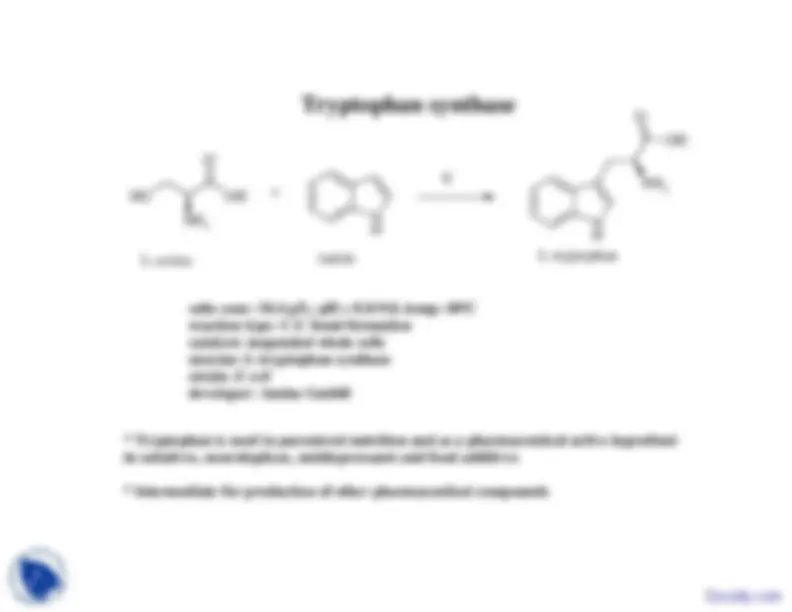
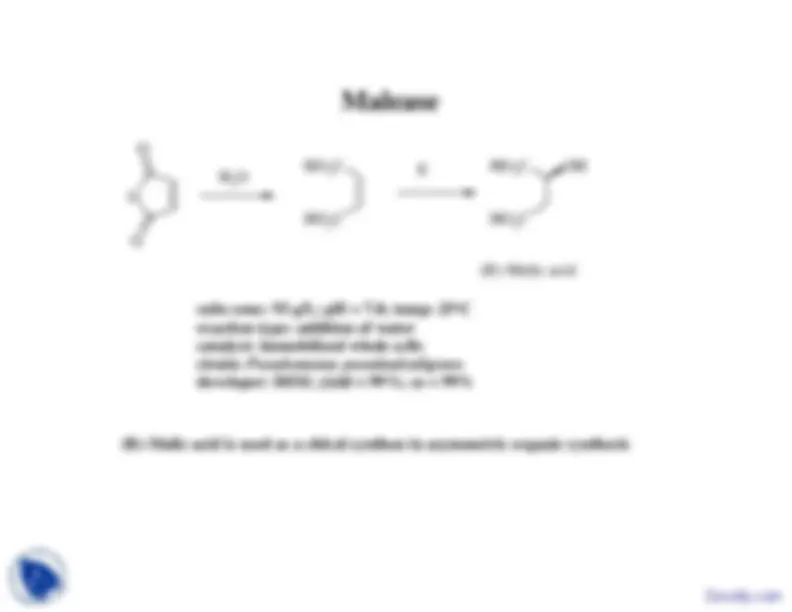
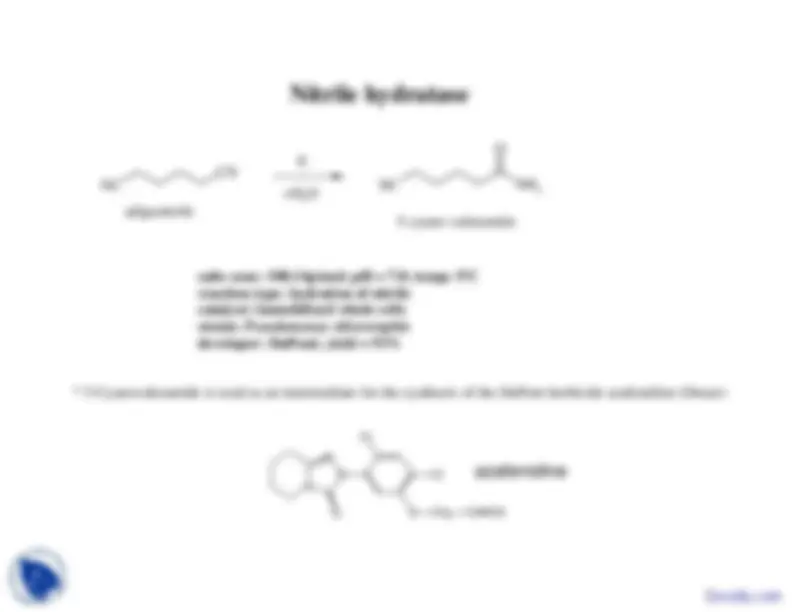
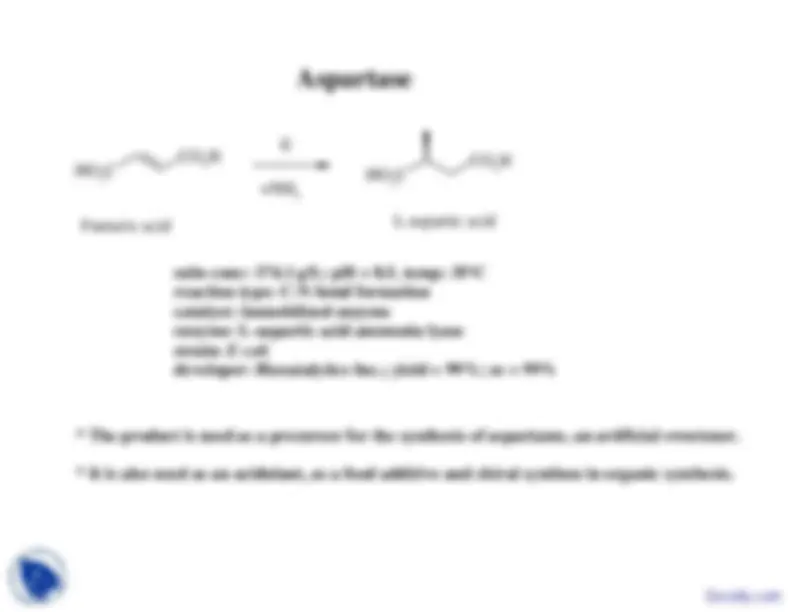
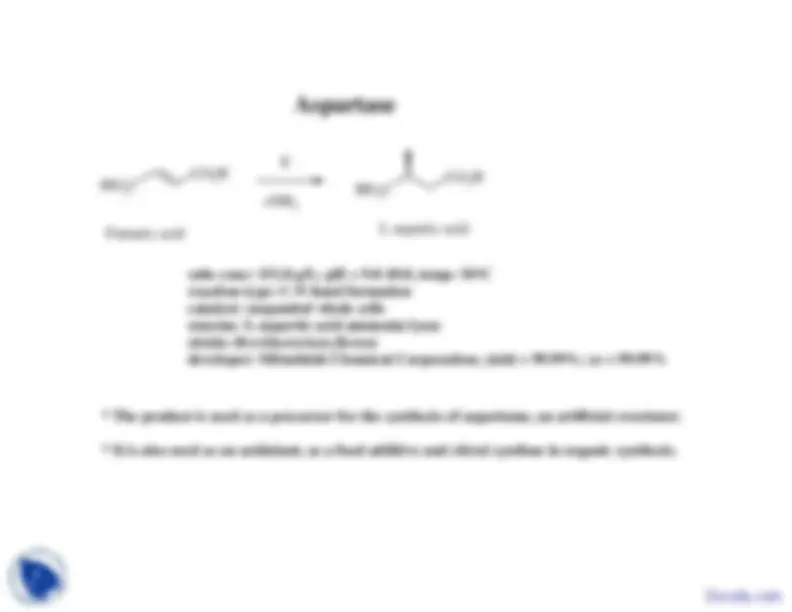
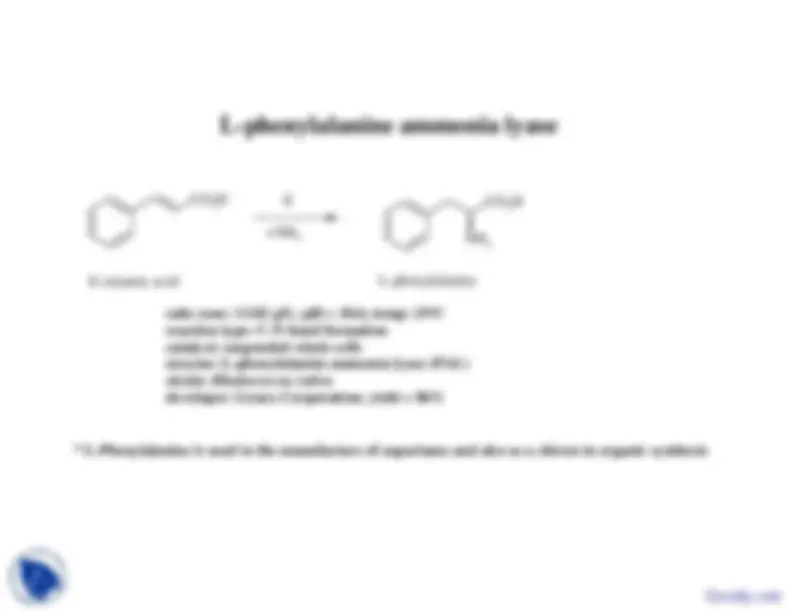


Study with the several resources on Docsity

Earn points by helping other students or get them with a premium plan


Prepare for your exams
Study with the several resources on Docsity

Earn points to download
Earn points by helping other students or get them with a premium plan
Community
Ask the community for help and clear up your study doubts
Discover the best universities in your country according to Docsity users
Free resources
Download our free guides on studying techniques, anxiety management strategies, and thesis advice from Docsity tutors
This lecture is part of lecture series on Enzymes in Functional Group Transformation course. This lecture was delivered at Deenbandhu Chhotu Ram University of Science and Technology, India. Main points for this lecture are: White, Biotechnology, Tryptophan, Synthase, Malease, Nitrile, Hydratase, Carnitine, Aspartase
Typology: Slides
1 / 11

This page cannot be seen from the preview
Don't miss anything!







(R)-
β
-hydroxy-isobutyric acid is used as a chiral
synthon for the synthesis of captopril, an ACE inhibitor
O H
CO
H 2
Cl
CO
H 2
(b)-hydroxy-isobutyric acid
SOCl
Cl
SOCl COCl
2
hydrolysis
NaSHAc
O 2
COCl
AcS
CO
H 2
NaOHL-proline
SOCl
2
Cl
O
N
CO
H 2
AcS
COCl NaOHL-proline
O
2
AcS
N
NH
SH 4
p o
e
base
S H
O
N
CO
H 2
O
CO
H 2
captopril
Malease
Nitrile hydratase
2
2
adiponitrile
5-cyano-valeramide
subs conc: 108.14g/mol; pH = 7.0; temp: 5
o C
reaction type: hydration of nitrilecatalyst: immobilized whole cellsstrain:
Pseudomonas chlororaphis
developer: DuPont; yield = 93%developer:
DuPont; yield = 93%
azafenidine
Carnitine dehydratase
Aspartase
CO
H 2
HO
C 2
CO
H 2
HO
C 2
E +NH+NH
3
Fumaric acid
L-aspartic acid
b
174 1
/L
H
8 5
35
C
subs conc: 174.1 g/L; pH = 8.5, temp: 35
o C
reaction type: C-N bond formationcatalyst: immobilized enzymeenzyme: L-aspartic acid ammonia lyase
i^
E
li
strain:
E
coli
developer: Biocatalytics Inc.; yield = 99%; ee = 99%
*** The product is used as a precursor for the synthesis of aspartame, an artificial sweetener.* It is also used as an acidulant, as a food additive and chiral synthon in organic synthesis.**
L-phenylalanine ammonia lyase
CO
3
E-cinamic acid
L-phenylalanine
subs conc: 13.02 g/L; pH = 10.6; temp: 25
o^ C
reaction type: C-N bond formation
t l
t^
d d
h l
ll
catalyst: suspended whole cellsenzyme: L-phenylalanine ammonia lyase (PAL)strain:
Rhodococcus rubra
developer: Genex Corporation; yield = 86%
*** L-Phenylalanine is used in the manufacture of aspartame and also as a chiron in organic synthesis**
GlcNAc 2 epimerase
O H
NHAc
O H
E
GlcNAc
2-epimerase
O
OH
NHAc
O OH H
O
OH
O OH H
NHAc
E
N-acetyl-D-glucosamine
N-acetyl-D-mannosamine
N acetyl D glucosamine
y
subs conc: 177 g/L; pH = 7.2, temp: 30
o C
reaction type: epimerization
t l
t^
l bili
d
catalyst: solubilized enzymeenzyme: N-acyl-D-glucosamine 2-epimerasestrain:
E coli
developer: Marukin Shoyu Co. Ltd.
*** N-acetyl-D-mannosamine serves as in situ generated substrate for the synthesis of N-acetyl-neuraminic acid**